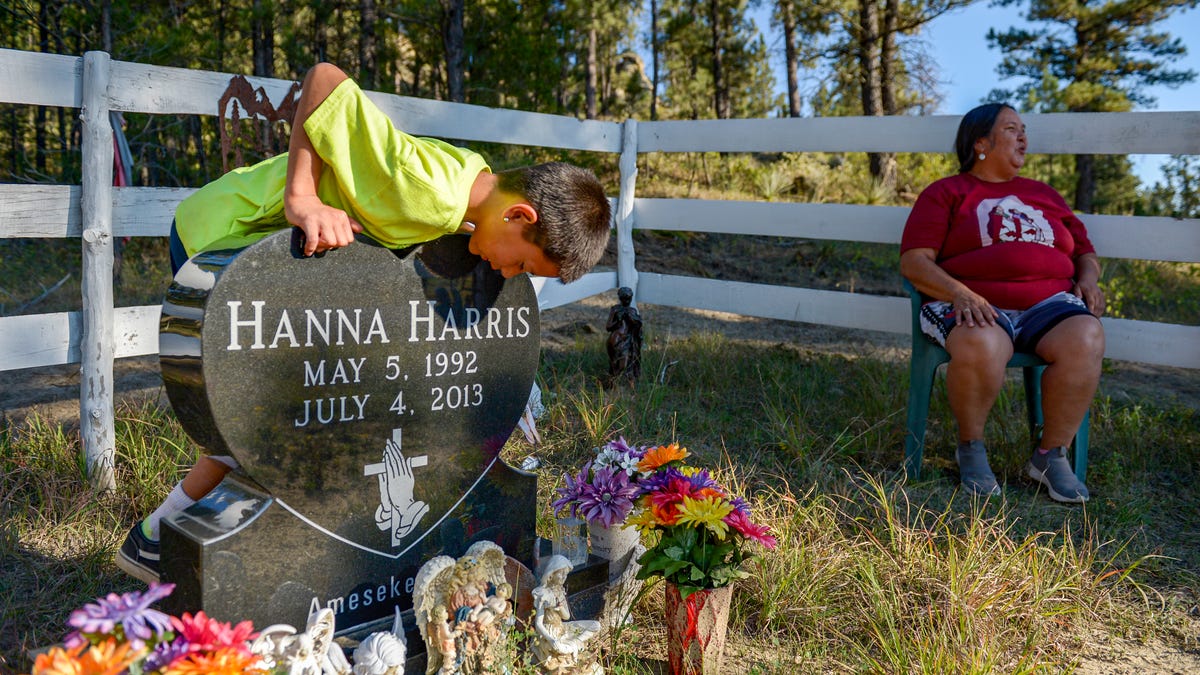Native Americans are reported missing at shocking rates. A new alert code aims to assist.
Every day, Loris Taylor, an advocate for Native American issues, receives numerous social media alerts concerning missing individuals. After dedicating two years to establish a national alert system for locating them, Taylor, the CEO and president of Native Public Media, now feels that their objective is within reach.
This month, the Federal Communications Commission (FCC) voted unanimously to implement the Missing and Endangered Persons code, responding to the urgent need highlighted by Indigenous leaders like Taylor to swiftly share information about missing adults. This initiative will allow regions across the U.S. to notify people via phone, television, and radio regarding individuals of all ages who are missing—not just children eligible for AMBER alerts—and will draw attention to the significant number of missing Native Americans.
Commissioner Geoffrey Starks of the FCC stated that this new code would address a “critical gap in our public safety infrastructure.”
Starks remarked, “This new three-letter ‘MEP’ event code aligns emergency alerts nationwide to ensure the public receives timely information and is equipped to assist during emergencies. In simple terms, this Order will contribute to saving lives.”
According to the FCC, over 188,000 adults went missing in 2023 without qualifying for an AMBER alert as they were 18 years or older. Approximately 3,200 of those missing were identified as Native American by FBI data, although studies suggest the actual number is likely much higher.
“Every night, when my kids are out, I find myself counting and asking, ‘Is everyone where they should be? Are they home?’ If they are on the move, I struggle to sleep,” Taylor shared.
In Montana, for instance, the Department of Justice reported that Native Americans made up about 25% of missing person reports while constituting only 6.6% of the state’s population. A survey conducted in 2023 by the First Nations Development Institute indicated that the foremost concern among Native Americans was the issue of missing and murdered Indigenous women.
“Every time a Native individual disappears, we lose a piece of our history and identity,” Lavina Willie-Nez, who coordinates AMBER alerts for the Navajo Department of Police, testified at an FCC meeting recently.
New code highlights the ongoing crisis of missing Native Americans
In 2023, Native Public Media, a national organization dedicated to assisting tribes in establishing broadcast infrastructure, presented the idea for this alert code to the National Congress of American Indians, who then forwarded the proposal to the FCC, as Taylor explained. Following the Commission’s decision to adopt the code, it should be operational nationwide within approximately a year.
While there have been some localized efforts to alert the public about missing adults, this new MEP code will introduce a standardized national alert system, allowing government entities to collaborate across different jurisdictions.
“The MEP event code is merely the initial step towards opening crucial conversations nationwide,” Taylor, a member of the Native Hopi Tribe, told YSL News.
She expressed that the issue of missing Native Americans has been “largely overlooked.” Numerous speculations exist regarding the disproportionately high number of missing Indigenous individuals, including the presence of long unpaved roads in some tribal areas and limited access to broadband and emergency services, which impede recovery initiatives.
According to Taylor, a severe shortage of funding for rescue operations, a lack of knowledge about the alert systems within tribal agencies, and insufficient centralized data exacerbate the disparities in addressing these cases.
For example, the Navajo Nation—a vast Indigenous reservation spanning parts of Arizona, New Mexico, and Utah—has managed to issue only eight AMBER alerts since 2018, with the FCC confirming that all resulted in the recovery of the children involved.
Paloma Perez Christie, a spokesperson for the FCC, informed YSL News that experts have identified “the legacies of violence, susceptibility, and cultural neglect experienced by Indigenous communities as significant factors contributing to these disparities.”
The FCC also indicated that Black individuals face similarly alarming rates of disappearance, representing 35% of adult missing cases, while constituting around 14% of the U.S. population.
The history of missing persons alerts
The AMBER Alert System was established in 1996 in Dallas, Texas. The Worth area saw collaboration between broadcasters and law enforcement to develop a system for locating abducted children, as stated by the U.S. Department of Justice. This initiative is named in honor of 9-year-old Amber Hagerman, who was taken while biking in Arlington, Texas, and tragically murdered.
Although some states have started using Silver Alerts for older individuals suffering from mental health issues, a universal code has yet to be established, which hampers communication across different jurisdictions.
The Ashanti Alert Act, designed to set up a nationwide communication system to assist in the search for missing adults, was enacted in 2018. This system is named after 19-year-old Ashanti Billie, who disappeared in Virginia in 2017; her body was discovered in North Carolina two weeks later, as reported by the Bureau of Justice Assistance.
Currently, these alerts are sent through a “patchwork of notification systems” governed by inconsistent local and state regulations, as highlighted in a presentation by the FCC’s Office of Native Affairs and Policy earlier this summer. This inconsistency can lead to severe and potentially harmful delays. The introduction of the new MEP code will establish a national framework for these alerts.

